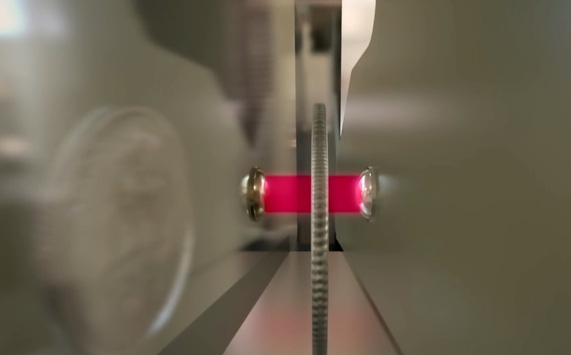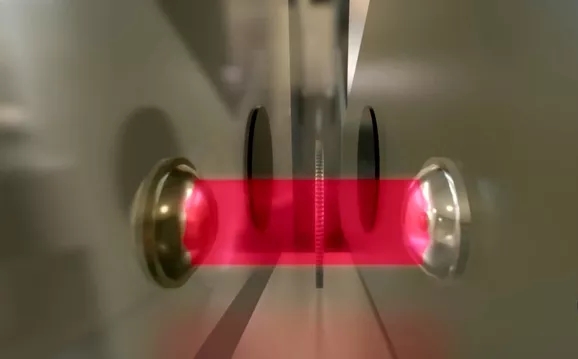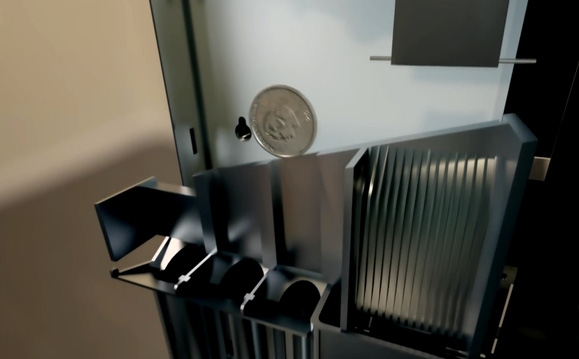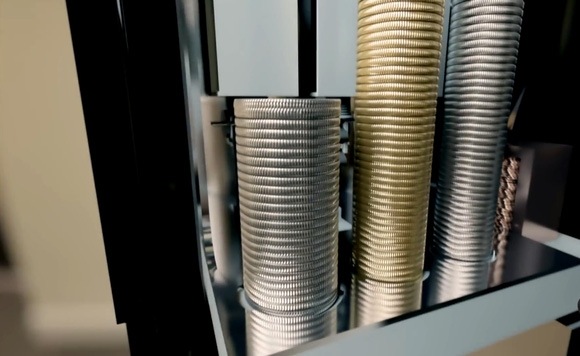How do vending machines distinguish coins?
The vending machine is an audiovisual device that seems very modern but in fact, the idea of it dates back to . 1st century AD.
The most primitive vending machines have also appeared in the UK since 1615 and until 1867, the fully automatic vending machine was officially created by Simeon Denham (British).
Although not a new invention, but have you ever wondered how these sales machines work? The following is the answer.
1. After inserting a coin into the machine, this metal block will pass through a light sensor to measure the size .

Light sensor measures coin size.
2. Next, the coin goes through an electromagnet to measure the metal composition . That is the reason that coins come in many shapes and are made from a variety of metals.

Electromagnet determines the metal component of the coin.
3. After identifying the coin, the machine automatically arranges the coin into its correct column.Counterfeit coins will be transferred to denial slots.

After that, the machine automatically arranges coins in each par value column.
4. If there is excess money ? The machine will automatically calculate to withdraw coins from out and return columns. This is the reason that vending machines often accept only some types of change.

The machine automatically calculates the withdrawal of coins to pay if there is excess money.
5. So if the item you bought is stuck? The infrared ray sensor near the door will confirm if any item is taken out or not. Otherwise, the coin will be returned to you.

Infrared rays at the door will confirm whether any items are taken out or not.
More specifically, readers can view the following video:
Operation mechanism of vending machines.
- 14 odd vending machines can only be Japan
- Automatic pizza vending machine in Japan - No need to worry about a closed shop, just buy it!
- Vietnam's excellent non-cash vending machine solution
- Automatic newspapers and magazines
- Vending machines serve by mobile phones
- Vending machines know the 'age' of the customer
- Vending machines give information about the earthquake
- What was the first vending machine launched 20 centuries ago?
- Automatic oyster vending machines in France
- Coca-cola has just been launched in Japan, with fewer calories and more caffeine
- Unique coins in the world
- Patient of a vending machine won a prize of $ 25,000
 'Fine laughs' - Scary and painful torture in ancient times
'Fine laughs' - Scary and painful torture in ancient times The sequence of numbers 142857 of the Egyptian pyramids is known as the strangest number in the world - Why?
The sequence of numbers 142857 of the Egyptian pyramids is known as the strangest number in the world - Why? History of the iron
History of the iron What is alum?
What is alum? The Mystery of Money That Shouldn't Exist
The Mystery of Money That Shouldn't Exist  Rare ancient coin sold for record price of nearly 2.1 million USD
Rare ancient coin sold for record price of nearly 2.1 million USD  Gold coin engraved with the portrait of the murdered Roman emperor
Gold coin engraved with the portrait of the murdered Roman emperor  China issues a set of 3 gold and silver coins to celebrate the first Mars exploration mission
China issues a set of 3 gold and silver coins to celebrate the first Mars exploration mission  Special gold coins appeared for sale up to 50 billion
Special gold coins appeared for sale up to 50 billion  Found extremely rare ancient Roman coins worth more than half a billion
Found extremely rare ancient Roman coins worth more than half a billion 